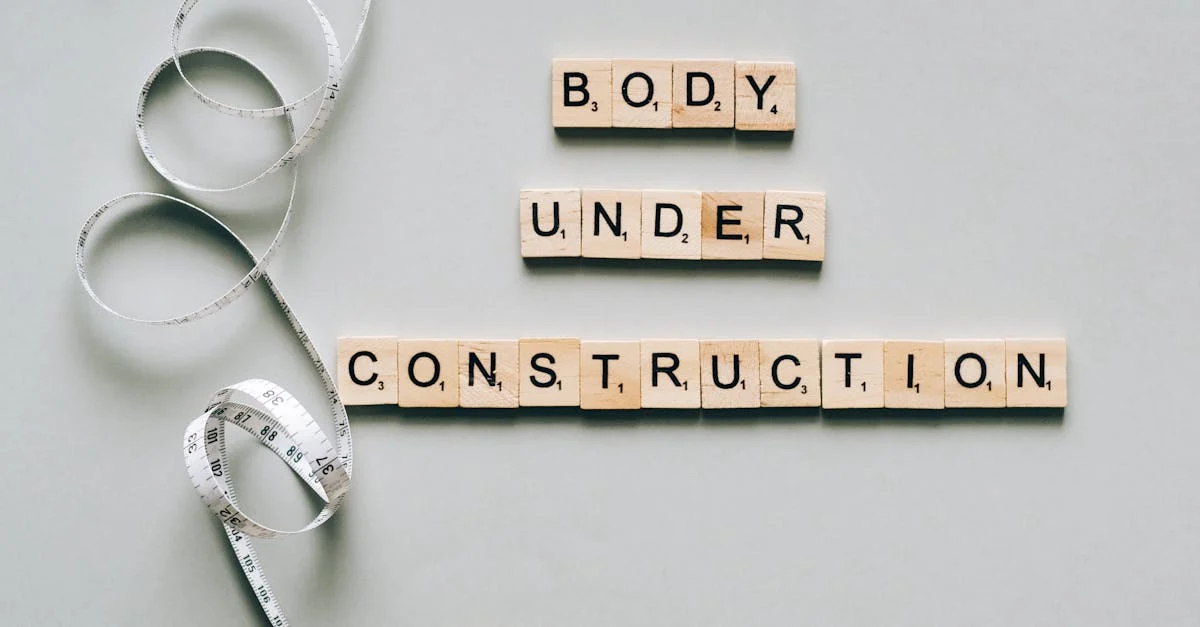Ready to discover science-backed ways to manage muscle spasticity naturally? Your journey towards better muscle control and comfort starts here. MS spasticity touches the lives of 60% to 90% of people in our MS community, and while one in five of us face significant daily challenges from these symptoms, powerful natural solutions await.
Picture this: gentle movements that unlock tight muscles, soothing water exercises that bring relief, and simple daily practices that help you regain control. Science confirms that regular movement and flexibility work create real improvements in muscle strength and daily living. Whether your spasticity symptoms whisper or shout, this practical guide opens doors to natural techniques that truly work. Let’s explore these proven approaches together, helping you build a personalised toolkit for managing MS spasticity with confidence.
Understanding MS Spasticity
MS spasticity emerges when damaged nerve pathways break down the vital communication between brain and muscles. This disruption triggers increased muscle tone, leading to stiffness and movement resistance [12]. While legs, groyne, and buttocks feel the greatest impact, spasticity can affect any muscle group [4].
What happens in muscle spasticity
Think of your muscles as finely tuned instruments. When MS damages the protective myelin coating around movement-controlling nerves, it throws off the harmony of signals between brain and muscles. Healthy muscles possess natural springiness – but with spasticity, that spring winds too tight [12]. This nerve damage creates two distinct patterns:
Flexor spasticity: Muscles tighten so intensely that limbs bend and resist straightening [12].
Extensor spasticity: Muscles lock limbs in straight positions, making bending difficult [12].
Each person’s experience varies dramatically. Some notice mild muscle tightness, while others struggle with severe, uncontrollable spasms [13]. Research reveals that 40% to 80% of people with MS face these symptoms during their journey [13].
Common triggers and warning signs
Your body may react more strongly to certain triggers:
Sudden movements or position shifts
Extreme temperatures and humidity
Infections (particularly bladder or chest)
Tight clothing
Full bladder or bowel
Skin irritation
Emotional stress [12]
Watch for early warning signs like increased muscle tone and movement resistance. You might also notice reduced range of motion, difficulty relaxing muscles, or clonus – rhythmic muscle twitches, especially in hands or feet [13].
Impact on daily life
MS spasticity touches every corner of daily living. Simple tasks demand more energy, bringing extra fatigue and discomfort [4]. Here’s how it affects different aspects of life:
Physical Function: Beyond limiting movement and causing joint and spine pain [13], spasticity sometimes offers unexpected benefits. For those with significant leg weakness, some muscle stiffness actually helps with standing and walking stability [12].
Quality of Life: Relationships, work life, and future plans often need adjustment [4]. Research highlights several challenges:
Anxiety and depression
Low self-esteem
Reduced sense of control
Financial strain from work limitations [4]
Sleep Patterns: Night-time muscle spasms can disrupt sleep for both you and your partner [13]. Poor sleep quality often intensifies other MS symptoms, particularly fatigue.
Quick action matters – untreated spasticity risks serious complications like contractures, where joints freeze in place [12]. Early recognition and management become your strongest allies in preventing long-term effects [12].
Natural Movement Techniques
Ready to explore movement strategies that truly work? Physical activity stands as your powerful ally against MS spasticity symptoms. Let’s discover how gentle stretching and water-based exercises create pathways to better muscle flexibility and reduced stiffness.
Gentle stretching exercises
Think of stretching as your daily muscle maintenance ritual – just as essential as brushing your teeth [6]. Success comes from holding each position between 30 seconds and 2 minutes [7].
Master these two key stretch types:
Flexor stretches: Target your joint-bending muscles, especially hip flexors. Supported bridge poses and belly twists shine here [7].
Extensor stretches: Focus on muscles that straighten your limbs, particularly along the front and inside of legs. Forward folds and eye of the needle poses work wonders [7].
Range-of-motion exercises beautifully complement your stretching routine, guiding each joint through its complete movement range [8]. Want to boost your results? Pair stretches with deep breathing – try longer exhales than inhales to soothe your nervous system [9].
Gentle muscle stroking or light pressure often brings welcome relief [10]. Need extra support? Your physiotherapist might suggest:
Braces and splints for locked muscles
Standing frames
Specially designed beds and chairs [10]
Water-based activities
Step into the pool and feel the difference. Water’s natural buoyancy creates a perfect environment for movement, supporting your limbs while offsetting body weight [11]. Scientific studies from 2010 confirm water therapy’s valuable role in symptom management [11].
Aim for 20-30 minute sessions [12]. Pool temperature matters – 80-84°F (27-29°C) hits the sweet spot [4]. Heat-sensitive? Choose cooler pools. Need deeper muscle relief? Warmer water enhances passive exercises [12].
Try these proven water exercises:
Swimming: Enjoy full-body movement while staying cool [13].
Ai chi: Experience this Japanese therapy’s blend of deep breathing and flowing movements [13].
Resistance training: Harness water’s natural resistance with pool noodles or weights [13].
Water’s pressure brings bonus benefits:
Better blood flow
Higher energy levels
Improved balance and coordination [11]
New to pool exercises? Start gently and build your strength over weeks [12]. Partner with MS-specialised physical therapists for safe, effective water therapy [13].
Lifestyle Changes That Help
Small daily choices create powerful ripples in MS spasticity management. Want to know which evidence-based lifestyle adjustments make the biggest difference? Let’s explore how temperature control, quality sleep, stress management, and mindful eating work together to ease muscle symptoms.
Temperature management
Did you know heat sensitivity touches up to 80% of people with MS? Even a tiny 0.5°C rise in body temperature can temporarily worsen symptoms [14]. Master your temperature with these proven strategies:
Cooling strategies:
Slip into a cooling vest or wrap
Refresh with cool baths
Set up strategic fan placement
Keep water close at hand throughout your day
Science points to 20°C as your sweet spot for managing spasticity symptoms [14]. Fascinating research reveals that even skin temperature changes, without affecting your core, can influence muscle function [14].
Sleep habits
Quality sleep becomes your night-time healer. Poor rest often amplifies spasticity discomfort [15]. Create your perfect sleep sanctuary:
Bedroom environment:
Cool, dark, and peaceful spaces
Smart layered bedding choices
Cooling mattress solutions
Secure grab rails for peace of mind [1]
Skip that afternoon coffee after 3 p.m [1]. Your body thrives on routine – wake at consistent times and greet morning sunlight to strengthen your natural sleep rhythm [15].
Stress reduction
Muscle tension often mirrors mental stress. Thankfully, proven relaxation techniques offer relief from both physical and emotional pressure [4]. Try these trusted approaches:
Deep breathing: Channel the focused breathing techniques that help during childbirth – they work wonders for spastic muscles [4].
Mindful practices: Regular meditation and guided imagery sessions become powerful allies against muscle tension, creating whole-body relaxation [16].
Diet modifications
Your plate holds more power than you might think. Smart nutrition choices support your overall MS journey while helping control spasticity [17]. Research shows your food choices influence:
Heart health and healthy weight
Immune system strength
Gut microbiome balance [17]
Fill your plate with:
Rainbow-bright fruits and vegetables
Quality lean proteins
Nourishing healthy fats
Wholesome grains [17]
Watch out for these potential trigger foods:
Heavily processed items
White flour products
Sugary drinks
Processed meats [2]
Your kitchen becomes your ally – cook fresh when possible, experimenting with herbs and spices rather than processed seasonings [17]. Remember to chat with your healthcare team before major dietary shifts to ensure changes complement your current care plan [2].
Mind-Body Approaches
Ready to discover the remarkable connection between your mind and muscles? Mind-body techniques offer powerful tools for managing MS spasticity symptoms. Picture this: 12% of MS patients found relief through meditation, reporting improvements in pain, overall symptoms, and fatigue [5]. Even better, nearly 23% of people experienced wonderful benefits like stress relief, relaxation, and reduced fatigue [5].
Breathing exercises
Your breath holds amazing power to calm spastic muscles. Deep breathing exercises become your trusted companions, expanding lung capacity and creating comfortable breathing rhythms throughout your day [18]. Watch what happens when you breathe properly:
Blood pressure naturally falls
Heart rate steadies
Stress hormone levels drop [19]
Curious about specialist-recommended techniques? Try the prolonged phonation test – a clever way to master respiratory control. Simply draw breath in and release it slowly, keeping oxygen-rich blood flowing longer [19]. Here’s how to make these exercises work brilliantly for you:
Intermittent Training Approach: Break your practice into gentle 2-3 minute segments, resting briefly between sets [19]. Brilliant for those days when fatigue feels overwhelming.
Progressive Muscle Relaxation: Journey through your body, mindfully tensing and releasing each muscle group while breathing steadily. Research shows this technique works wonders for stress, anxiety, and certain types of chronic pain [20].
Meditation practices
Let’s explore the gentle power of mindfulness meditation. Research reveals that developing mindful awareness brings:
Freedom from overwhelming stress
Stronger emotional resilience
Skilful ways to cope
Better mental wellbeing [5]
Think of mindfulness as opening a window to the present moment, observing your thoughts, feelings, bodily sensations, and surroundings without judgment [21]. Modern mindfulness programmes weave together beautiful elements:
Guided Imagery: Close your eyes and step into carefully crafted mental scenes. When practising motor imagery, your brain actually mirrors the patterns of physical movement – fascinating findings from brain imaging studies [21].
Mindfulness in Motion: This lovely 8-week journey blends gentle yoga flows, mindful awareness, and soothing music. Research celebrates its ability to:
Brighten your mood
Quiet anxious thoughts
Deepen mindful awareness [22]
Here’s something wonderful: 32% of people with MS found significant relief through mind-body therapies [22]. These precious skills, learned with expert guidance, become yours to practice independently, building confidence in your healing journey [21].
Regular practice gently calms your nervous system [21], offering special comfort when stress amplifies symptoms. These approaches work beautifully alongside other treatments, creating a complete symphony of care for your MS spasticity management.
Creating a Daily Management Plan
Smart routines become powerful allies in MS spasticity management. Let’s build your personalised plan to handle both predictable patterns and surprise symptoms with confidence.
Morning routine
Your morning sets the stage for successful symptom management. Begin with gentle bed exercises to ease waking muscles [23]. Master this morning sequence:
Early morning stretches:
Gentle hip and knee movements
Careful trunk rotations
10-20 minute rest before rising
Time your medication 30 minutes before getting up for peak effectiveness [23]. Remember, proper posture throughout your morning activities prevents muscle tightness from prolonged positions [24].
Evening wind-down
Nightfall often brings increased spasticity challenges [25]. Create your perfect evening routine:
Bedtime preparation:
Check room temperature (aim for 20°C) [25]
Arrange supportive mattress and pillow positions
Cool down with ice packs after evening activities
Strategic timing of evening medicines supports better overnight symptom control [10]. Add gentle stretches and calming breaths to ready both body and mind for restful sleep.
Emergency relief strategies
Quick action matters during unexpected spasticity flares. Build your emergency toolkit by knowing your triggers and response plans [24]. Watch for these common triggers:
Physical factors:
Temperature shifts
Restrictive clothing
Full bladder or bowel
Skin discomfort
Master these rapid relief techniques:
Gentle muscle pressure or stroking
Mindful position changes
Cooling methods for heat sensitivity
Calming breath work
Track your symptoms in a daily diary to spot patterns [3]. Notice which activities, times, or conditions affect your spasticity most.
Remember, successful management needs multiple approaches. Regular check-ins with healthcare professionals help fine-tune your strategies [24]. Keep your care team updated to ensure your daily and emergency plans stay effective for your unique needs.
Smart home organisation makes a difference – place cleaning supplies and adaptive equipment within easy reach during spastic episodes [26]. Consider adding non-slip mats and handrails for extra security during symptom flares.
Conclusion
Science lights the path forward for everyone managing MS spasticity. Natural approaches, backed by research, offer more than hope – they provide practical tools for real symptom relief. Your dedication to gentle stretching, water therapy, and mindful breathing creates meaningful changes in muscle comfort and daily living.
Want to know what makes these approaches truly powerful? The magic lies in their combination. Quality sleep wraps around temperature management, while stress reduction dances with proper nutrition. Together, these lifestyle choices build a strong foundation for managing spasticity. Your structured daily routine becomes both shield and compass, guiding you through unexpected flares while strengthening your management skills.
Remember this: your journey with MS spasticity is uniquely yours, yet you’re not alone. These evidence-based techniques become faithful companions, helping you write your own success story. Through consistent practice and careful attention to your body’s signals, you hold the power to shape better days ahead. Take these tools, make them your own, and step confidently toward improved wellbeing with MS.
References
[1] – https://www.nationalmssociety.org/understanding-ms/what-is-ms/ms-symptoms/spasticity
[2] – https://mymsaa.org/ms-information/symptoms/spasticity/
[3] – https://www.msaustralia.org.au/symptom/spasticity-spasms/
[4] – https://www.medicalnewstoday.com/articles/multiple-sclerosis-spasticity-causes-and-management
[5] – https://www.mssociety.org.uk/about-ms/signs-and-symptoms/spasms-and-stiffness
[6] – https://www.mssociety.org.uk/about-ms/signs-and-symptoms/spasms-and-stiffness/understanding-spasms-and-stiffness
[7] – https://mstrust.org.uk/information-support/exercise-ms/build-your-own-exercise-routine/stretching-exercises
[8] – https://overcomingms.org/resources/exercise/stretches-to-improve-spasticity
[9] – https://www.mssociety.org.uk/living-with-ms/physical-and-mental-health/staying-active/yoga-for-ms
[10] – https://health.clevelandclinic.org/best-exercises-to-reduce-spasticity
[11] – https://www.mssociety.org.uk/about-ms/signs-and-symptoms/spasms-and-stiffness/treating-spasms-and-stiffness
[12] – https://waterresist.com.au/pages/multiple-sclerosis-and-aquatic-therapy
[13] – https://www.msaustralia.org.au/publication/exercise-and-ms/
[14] – https://www.nationalmssociety.org/news-and-magazine/momentum-magazine/living-well/mind-over-muscle
[15] – https://www.healthline.com/health/multiple-water-therapy
[16] – https://pmc.ncbi.nlm.nih.gov/articles/PMC6205043/
[17] – https://www.mssociety.org.uk/living-with-ms/physical-and-mental-health/sleep-and-ms
[18] – https://www.nationalmssociety.org/news-and-magazine/momentum-magazine/living-well/managing-sleep-disorders
[19] – https://mymsaa.org/ms-information/symptoms/sleep-issues/
[20] – https://www.nationalmssociety.org/managing-ms/living-with-ms/diet-exercise-and-healthy-behaviours/diet-nutrition
[21] – https://www.healthline.com/nutrition/multiple-sclerosis-foods-to-avoid
[22] – https://pmc.ncbi.nlm.nih.gov/articles/PMC4102064/
[23] – https://mstrust.org.uk/information-support/exercise-ms/build-your-own-exercise-routine/breathing-exercises
[24] – https://www.nationalmssociety.org/news-and-magazine/momentum-magazine/living-well/better-breathing-with-ms
[25] – https://www.webmd.com/sleep-disorders/muscle-relaxation-for-stress-insomnia
[26] – https://pmc.ncbi.nlm.nih.gov/articles/PMC3512214/
[27] – https://pmc.ncbi.nlm.nih.gov/articles/PMC5649345/
[28] – https://mstrust.org.uk/news/expert/ask-expert-spasticity-and-spasms
[29] – https://www.nationalmssociety.org/for-professionals/for-healthcare-professionals/managing-and-treating-ms/symptom-management
[30] – https://overcomingms.org/latest/why-ms-spasticity-worse-night
[31] – https://www.healthcentral.com/condition/multiple-sclerosis/your-playbook-for-reducing-spasticity-in-ms
[32] – https://www.healthline.com/health/multiple-sclerosis/daily-tips-managing-ms









